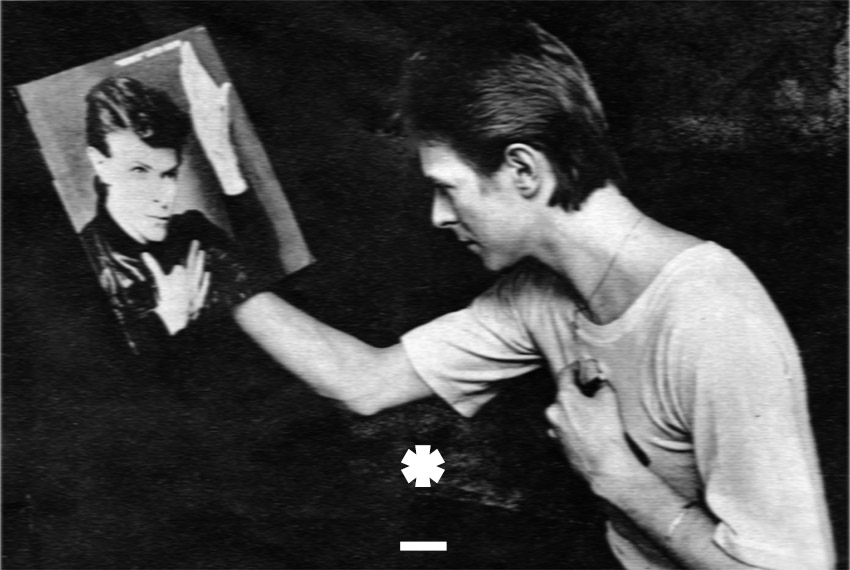1980-1989: The Return of the Thin White Duke and the Death of Major Tom
DAVID BOWIE’S “FASHION” MUSIC VIDEO
The ’80s started off, as it seemed to everyone, positively. Bowie, now a bit more concerned with commercial success, tried to smooth out some of the edges of previous releases and meet his audience a bit closer to halfway. Scary Monsters (And Super Creeps) did something fantastic, it introduced Bowie to more contemporary Dance and Reggae styles, songs like “Fashion” and “Ashes to Ashes” were symbolic of this change. However, you can feel that something was a bit off. Too much sheen and bombast in the wrong places, and a little too much going through the motions in others. If David sought commercial success he wasn’t going to do it this way.
#RIP #DavidBowie "Changed My Life," @nilerodgers https://t.co/xsVsKWJyxb pic.twitter.com/CRbqNW2eCy
— Nile Rodgers (@nilerodgers) January 11, 2016
Nile Rodgers meeting David Bowie couldn’t have come at a worse time. After a massively successful period helming disco band CHIC through the good times, unsuccessful albums like Tongue In Chic and Believer had dissolved the last ties of his band. As he pursued a solo career with Adventures in the Land of the Good Groove, came the realization that whatever he was doing now had little chance of being successful either. Whatever groundbreaking dance music he’d done before was now in many aspects too long in length and in the tooth to compete in this market.
When David tasked Nile to take over Tony Visconti as both producer, and nearly all of his band as lead arranger, he was doing so because Nile Rodgers knew how to make pop music that didn’t pander. The responsibility of putting out a hit after signing an over $17 million contract with EMI fell on David, but on Nile felt the responsibility of reimagining David’s spare demos as a new lease on his own career. It’s not surprising then that Nile brought an intense focus to this project. Sentimental odes to songs nearly forgotten, like “China Girl”, “Cat People” and “Criminal World” get injected with entirely different perspectives, rendering them like new originals. It’s the definitive original that stood out though, a piece called “Let’s Dance.”
DAVID BOWIE’S “LET’S DANCE” MUSIC VIDEO
The longest piece on the album, one combining Texas blues with the post-disco and dancehall motives Nile had been trying desperately to get played, had the perfect composition audiences were looking for. When Stevie Ray Vaughan’s inspired solo launched and an equally incendiary video conjured up images meant to be swayed along to, it unsurprisingly became David’s fastest charting #1 hit.
zZ SAMPLER: DAVID BOWIE 1980-1989
The problem with massive success of Let’s Dance and the equally impressive “Serious Moonlight Tour” was that conquering America came at a cost. For Bowie, it appeared that he needed to play to his audiences now. If the next album wasn’t Let’s Continue Dancing, would they respond just the same? In hindsight, it seemed that it was one that David wasn’t interested in pursuing. His other collaboration with Queen, “Under Pressure,” showed that his newfound audience wanted or expected a certain dance. The problem became the sheen.
DAVID BOWIE AND “REBEL REBEL” AT LIVE AID
Once before the Thin White Duke was a persona put on to signal a detachment from his own worst excesses and a turn toward new music that he was attached to, now it was all a put-on in reverse. When the ill-fitting, now elbow-padded, suits of that side of Bowie appeared on albums like Tonight and Never Let Me Down, (as popular as those albums were) they became his empty suit. Aimless and thoroughly detached, something underlined by his eye-raising cover of “Dancin’ in the Street” with Mick Jagger, flanked on-stage with needless accompaniment, Live Aid marked both the pinnacle of his drop and the summit of his descent. Personally, his work against racism in South Africa and on MTV, plus his dedicated work to aid in African AIDs research showed a man with his head in the right direction, but whose own career was critically facing the wrong direction.




